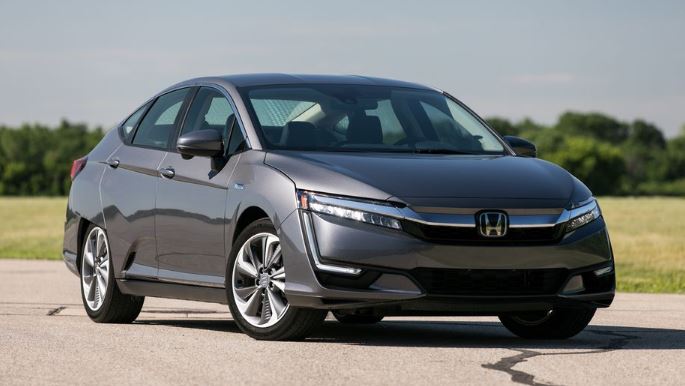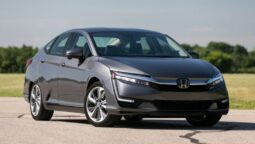Honda Clarity (2017-2021)
- 1st Generation
- Sold in the USA = 2017-2021
- Status = Discontinued
Honda Clarity Price in the USA in 2021
| Honda Clarity Plugin-Hybrid Touring | 37,615 $ |
| Honda Clarity Plugin-Hybrid Base | 34,415 $ |
The Honda Clarity is a hydrogen fuel-cell electric vehicle that was initially called the Honda FX Clarity in 2008. The Honda Clarity’s electric and plug-in hybrid models were introduced in 2017. The various drivetrains of the Honda Clarity were distinguished by colors and exterior designs. Honda announced in August 2021 that it would stop the production of the Honda Clarity in the United States, as the Honda Sayama plant was scheduled to be closed in March 2022. However, Honda has continued to sell the Honda Clarity fuel cell throughout 2022. The Honda Clarity had the highest EPA driving range in the United States with zero emissions. The Honda Clarity was available in the United States until 2021, and now its production has been stopped for all its models, including electric, plug-in hybrid, and fuel cell models. The Honda Clarity was awarded the world’s green car of the year in 2009, and BBC Top Gear declared it the Most Important car of the hundred years. Unfortunately, the Honda Clarity failed in the United States market because of several reasons. It had less market demand, and the absence of government subsidies increased its purchase cost, which decreased its sales. Another reason for its discontinuation is the low number of hydrogen stations in the country. The stations were unreliable, with complaints of long waiting hours by the users, and many stations were not operational. The lack of government subsidies made the Honda Clarity cost $15,000. It is sad to see such technology end in the United States, but Honda announced that it would electrify all of its models by 2030 and have a fully electric and fuel-cell lineup by 2040. We hope to see modern technology in the future by Honda in the United States. It is also expected that Honda may start selling a fuel cell vehicle at a lower cost than the previous Honda Clarity, and it may hit the market in the next 3-4 years. Honda is also considering fuel cells in commercial trucks, not just passenger vehicles. Hydrogen fuel cells are considered to tackle global warming by producing electricity through oxygen and hydrogen reactions without carbon dioxide emissions. Refueling with hydrogen is a challenge, and Honda is looking into this matter so that it can be solved in the future. Now, coming back to the Honda Clarity, the 2021 Honda Clarity is the generation introduced in 2017 and is an eco-minded sedan.
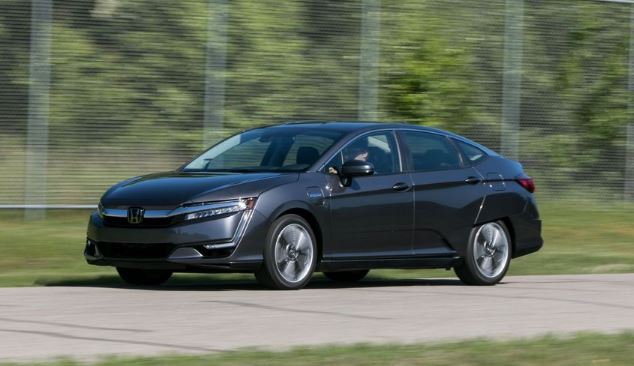
Trims & Variants:
The last 2021 Honda Clarity was available in two variants, the plug-in hybrid, and the hydrogen fuel cell model. The Honda Clarity model with a hydrogen fuel cell is available only in California because hydrogen fuel stations are vastly present in California, while in the USA, it is available in two versions/models:
Honda Clarity Plug-in Hybrid base model:
It offers LED headlights, keyless entry, heated front seats, an eight-inch touch screen, a dual-zone climate control system, and Honda Sensing, which includes collision mitigation braking, a lane-keep assist system, and an adaptive cruise control system.
Honda Clarity Hybrid Touring model:
It offers power-adjustable front seats, leather upholstery, and navigation.
Honda Clarity Fuel Cell:
It offers a fuel cell drivetrain, a head-up display, and twelve speakers with a subwoofer.
Powertrain & Drivetrain:
The Honda Clarity plug-in hybrid model features a 1.5-liter, 4-cylinder engine that produces 212 horsepower and 232 pounds-feet of torque. It also includes an electric motor supported by a 17 kWh lithium-ion battery. The Honda Clarity fuel cell model, on the other hand, employs hydrogen fuel cells that convert hydrogen into electricity, resulting in 171 horsepower and 221 pounds-feet of torque. While the Honda Clarity PHEV and the Honda Clarity hybrid Touring have similar drivetrains and performance, they differ in some aspects.
Performance & Drive:
The Honda Clarity provides a smooth ride quality and excellent performance, whether with its plug-in hybrid model or the fuel cell model. Both models come with a single-speed automatic transmission that is smooth and adds to the driving experience. The driving experience is equally enjoyable in plug-in hybrid models and fuel cell models. The two motors in the plug-in hybrid model provide instant torque to drive the car from zero, but driving at high speeds can be challenging, and ride quality may suffer. The Honda Clarity has one of the best EPA ratings in the electric vehicle lineup. The plug-in hybrid models offer a combined rating of 110 MPG and an electric-only range of 48 miles. The Honda Clarity fuel cell model has a driving range of 360 miles, equivalent to 68 miles per gallon when converted to gasoline. Charging the Honda Clarity plug-in hybrid is very convenient, taking only twelve hours to fully charge the battery using a 120-volt power outlet typically found in households or a 240-volt power outlet, taking 2.5 hours to charge the battery fully. Unfortunately, the hydrogen fuel cell models are charged at hydrogen build power stations located mostly in California. The limited number of hydrogen power stations makes it exhausting to charge cars because of long waiting lines and fewer service stations. The Honda Clarity’s steering wheel is lightweight and gives drivers confidence in controlling the car with less effort. The driver can smoothly maneuver the vehicle around road corners with minimal body lean, maintaining ride efficiency. The braking system of the Honda Clarity is efficient with crisp brake feels, stopping the car smoothly without any jerks. Both models offer front-wheel-drive configuration as standard, delivering a smooth and quiet performance at moderate speeds but producing noise when driving at high speeds.
Exterior Design & Features:
The plug-in hybrid Honda Clarity boasts a striking exterior design with LED headlights and taillights. It also has a laser-welded roof and a typical Honda sedan look, including a chrome grille at the front and a deck lid garnish at the rear. The wheels have a unique design. It has a total length of 4895 millimeters, a width of 1877 millimeters, and a height of 1478 millimeters. The headlight design and front fascia styles differ in the hybrid and hydrogen fuel models.
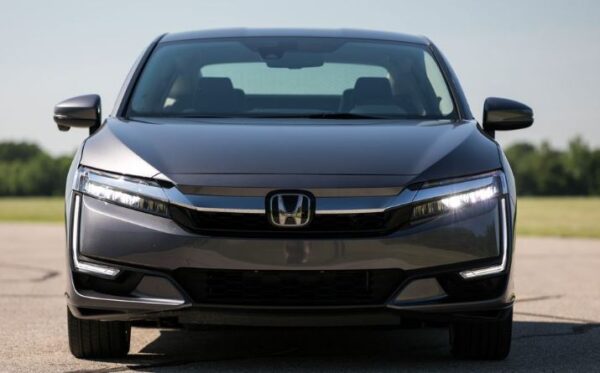
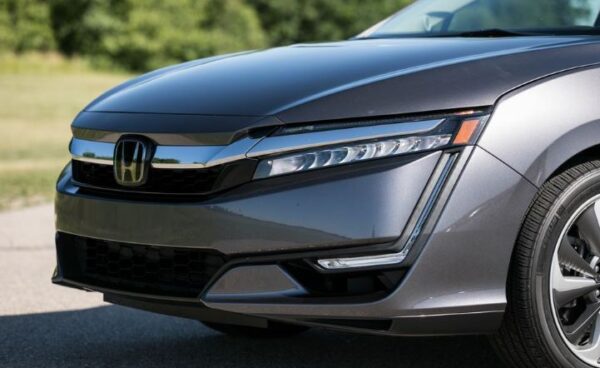
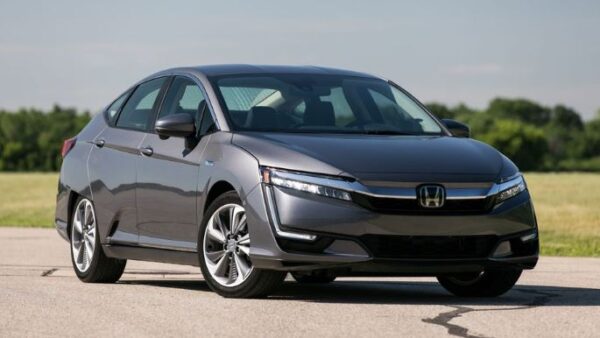

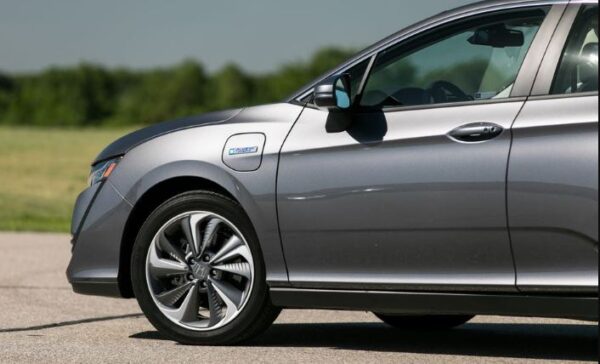
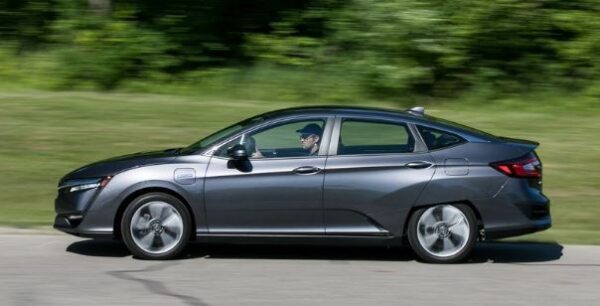
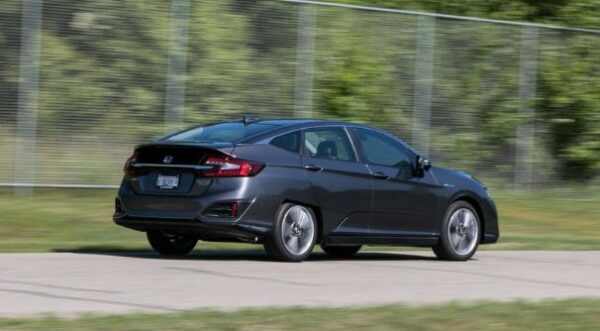
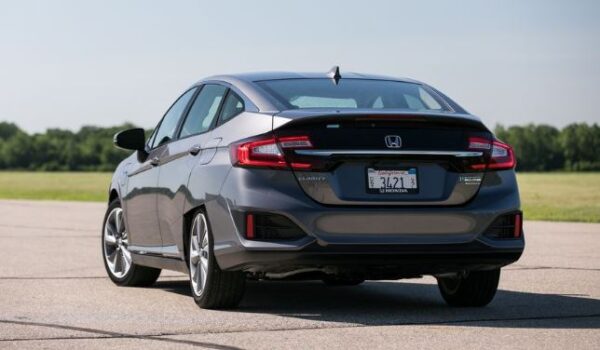



Interior Design & Features:
The Honda Clarity is a typical sedan that can accommodate up to five people. It offers efficient space in both rows, and the seats are well-padded for maximum comfort. The base models come with cloth upholstery, while the other trims feature leather-covered seats, heated front seats, and eight-way power adjustment in the driver’s seat. The cabin has an elegant quality with wooden trim pieces and soft materials used throughout. The plug-in hybrid models offer a cargo space of 15.5 cubic feet, while the fuel cell models have a lower trunk space of 11.8 cubic feet due to the placement of the hydrogen tank. The dashboard features a standard eight-inch touchscreen that provides infotainment and comes with an Android Auto and Apple CarPlay interface. The cabin also includes two USB ports, eight speakers, keyless entry, a dual-zone climate control system, and Bluetooth connectivity.
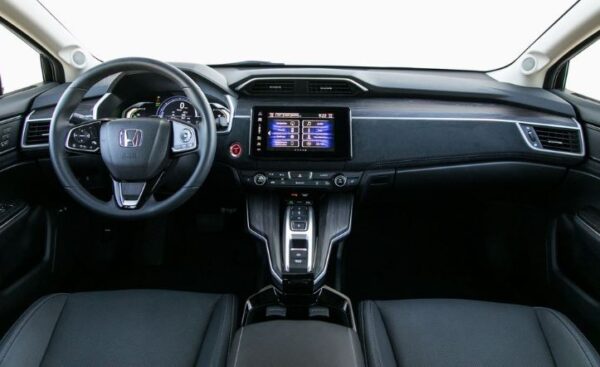
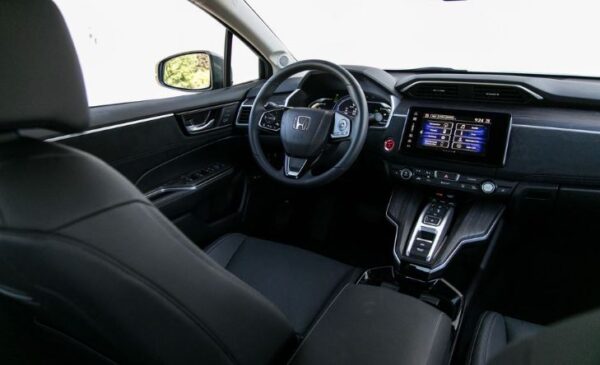
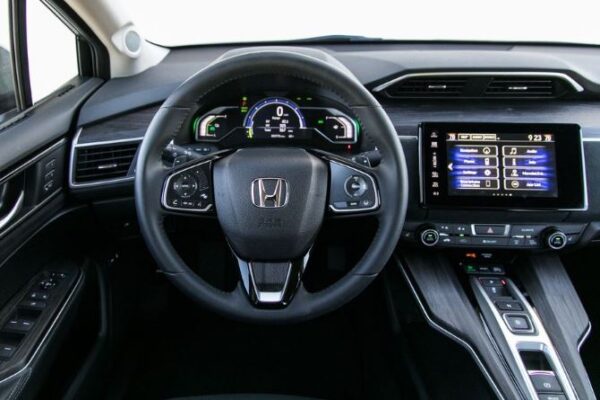
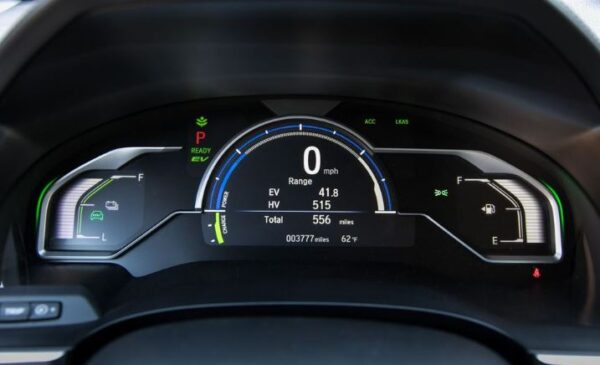
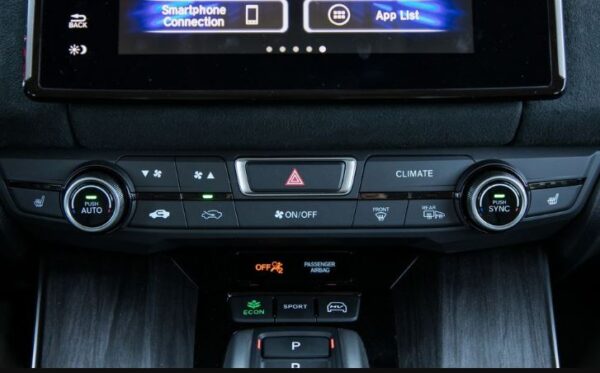

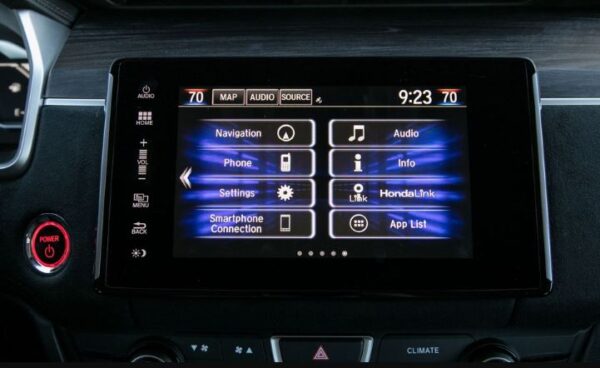
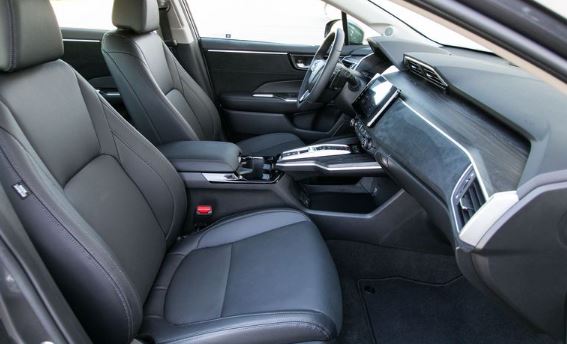

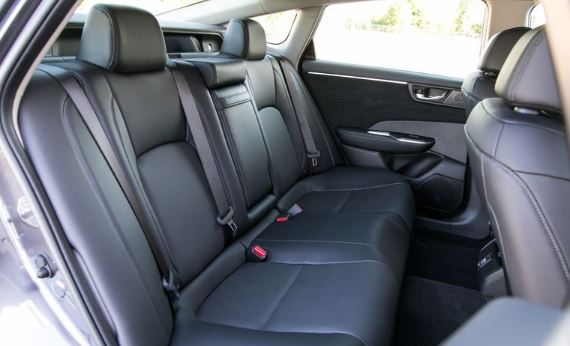

Safety & Features:
The Honda Clarity includes a range of standard safety features, including automatic emergency braking, forward collision warning, lane keep assist, a rearview camera, adaptive cruise control, rear parking sensors, road departure mitigation, and a head-up display.
Pros & Cons:
Pros:
The Honda Clarity offers updated standard features in all the models, delivering a balanced ride and decent handling maneuvers. Its electric range is competitive when compared to its rivals. The Clarity is a unique Honda model that functions well as a family sedan while showcasing cutting-edge propulsion technology. The cabin is also nicely equipped and provides a smooth ride.
Cons:
The infotainment system features touch controls that can be difficult to use, and the ride quality can be affected when driving at higher speeds. Additionally, the reliability rate of the car is below average. Rear-seat space is also somewhat snug, and the car is not particularly exciting to drive. Finally, the fuel cell model is limited by the availability of hydrogen.
Major Competitors:
- Toyota Camry Hybrid
- Toyota Avalon Hybrid

